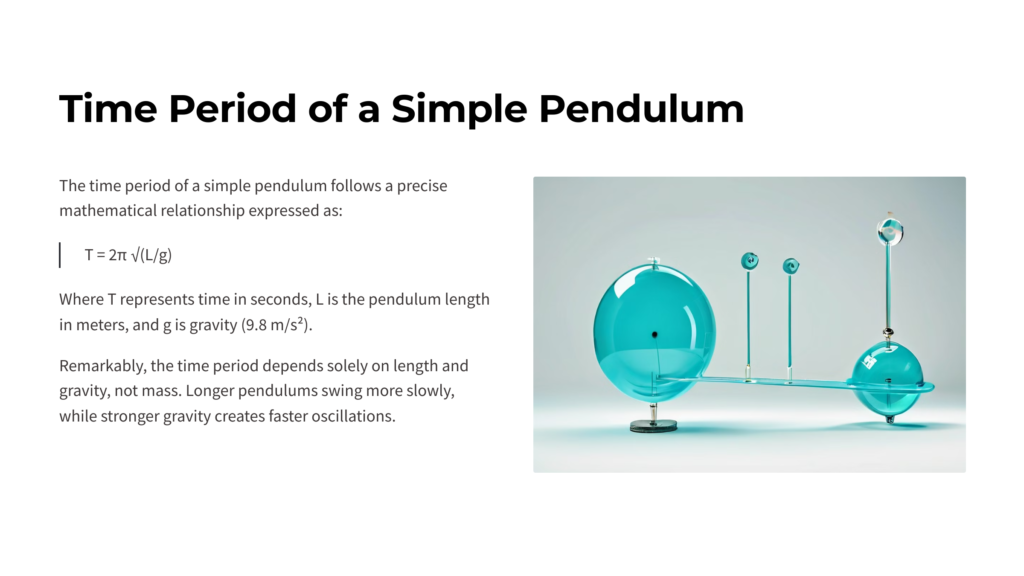Question: In a simple pendulum experiment, the bob takes time
t1 to move from its extreme position A to some intermediate point C, and
t2 to move from C to the mean position O. Prove that the time period
T of the pendulum is
( 4 bigl(t_{1} + t_{2}bigr). )
Given: The bob moves from the extreme position A to an intermediate point C in a time
t1, and from C to the mean position O in t2.
To Find: The time period T of the pendulum.
Key Idea: For a simple pendulum undergoing SHM (Simple Harmonic Motion), it takes one-fourth
of the total time period (T) to go from an extreme position (A) to the mean position (O). Hence,
( text{Time from A to O} = dfrac{T}{4} ).
The total time from A to O can also be written as the sum of the times from A to C and C to O:
( t_{1} + t_{2} = dfrac{T}{4} ).
Rearranging this equation to solve for T gives:
( T = 4 bigl(t_{1} + t_{2}bigr). )
Answer: The time period of the simple pendulum is
( T = 4(t_{1} + t_{2}) ).



